#Soumendu Roy
Text


Charulata (1964) || Ghare Baire / The Home and the World (1984)
[ dir. Satyajit Ray ]
[ d.o.p. Subrata Mitra // Soumendu Roy ]
#charulata#Ghare Baire#the home and the world#satyajit ray#madhabi mukherjee#swatilekha chatterjee#swatilekha sengupta#indian cinema#bengali cinema#cinema#films#movies#cinematography#world cinema#classic cinema#1960s#1980s#historical films#film scenes#movie scenes#parallel cinema#indian films#indian movies#bengali films#bengali movies#film screencaps#movie screencaps#screencaps#madhavi mukherjee#charulata 1964
20 notes
·
View notes
Text
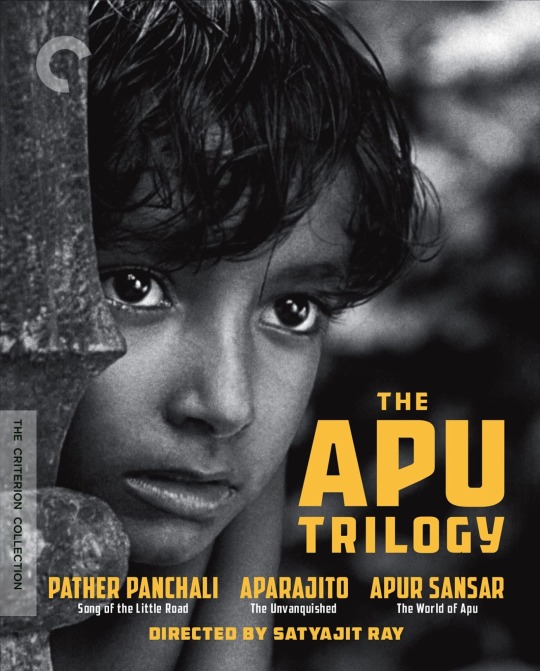

On January 2nd 2024, the @criterioncollection will release a 4K uhd blu-ray upgrade of the Apu Trilogy with following extras:
SPECIAL FEATURES
4K digital restorations of all three films, undertaken in collaboration with the Academy Film Archive at the Academy of Motion Picture Arts and Sciences and L’Immagine Ritrovata, with uncompressed monaural soundtracks on the 4K UHD and Blu-ray editions
In the 4K UHD edition: Three 4K UHD discs of the films and three Blu-rays with the films and special features
Audio recordings from 1958 of director Satyajit Ray reading his essay “A Long Time on the Little Road” and in conversation with film historian Gideon Bachmann
Interviews with actors Soumitra Chatterjee, Shampa Srivastava, and Sharmila Tagore; camera assistant Soumendu Roy; and film writer Ujjal Chakraborty
Making “The Apu Trilogy”: Satyajit Ray’s Epic Debut, a video essay by Ray biographer Andrew Robinson
“The Apu Trilogy”: A Closer Look, a program featuring filmmaker, producer, and teacher Mamoun Hassan
Excerpts from the 2003 documentary The Song of the Little Road, featuring composer Ravi Shankar
The Creative Person: “Satyajit Ray,” a 1967 documentary short by James Beveridge, featuring interviews with Ray, several of his actors, members of his creative team, and film critic Chidananda Das Gupta
Footage of Ray receiving an honorary Oscar in 1992
Programs on the restorations by filmmaker Kogonada
PLUS: Essays by critics Terrence Rafferty and Girish Shambu, as well as a selection of Ray’s storyboards for Pather Panchali
Cover by F. Ron Miller
#The Apu Trilogy#Satyajit Ray#The Criterion Collection#4K uhd blu-ray#4k hdr#arthouse cinema#film classics#film preservation#Pather Panchali#Aparajito#Apur Sansar
4 notes
·
View notes
Text
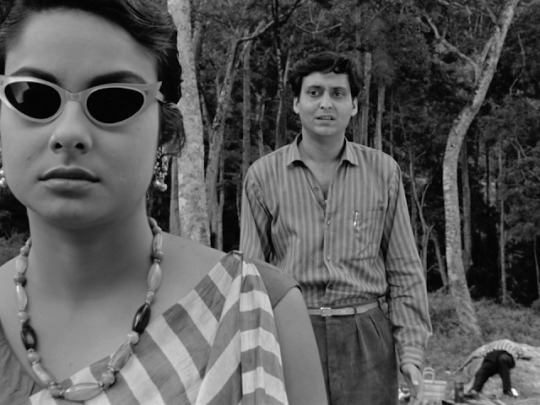
Madhabi Mukherjee, Soumitra Chatterjee, and Haradhan Bannerjee in The Coward (Satyajit Ray, 1965)
Cast: Soumitra Chatterjee, Madhabi Mukherjee, Haradhan Bannerjee. Screenplay: Satyajit Ray, based on a story by Premendra Mitra. Cinematography: Soumendu Roy. Film editing: Dulal Dutta. Music: Satyajit Ray.
Satyajit Ray's romantic drama The Coward owes something, I think, to that greatest of romantic dramas, David Lean's Brief Encounter (1945). Both are drenched in what might have been, and both have directors who know how to create tensions that are never resolved. There's no resort in either film to the feel-good ending. The characters in both films are trapped in custom and convention. But this is explicitly a Satyajit Ray film -- a minor one, perhaps, but a gem nevertheless. The still above is an almost perfect encapsulation of the essence of the characters and their relationships: Karuna (Madhabi Mukherjee) masked by sunglasses and giving the coldest of shoulders to Amitabha (Soumitra Chatterjee), whose desire and cowardice are written on the actor's expressive face, while Bimal (Haradhan Bannerjee) lies passed out in the background, oblivious to what's going on between the other two. Or is he? It's one of the delicious ambiguities of Ray's screenplay and Bannerjee's performance that we're never entirely certain that Bimal doesn't know that Amitabha and Karuna knew each other at university and were once in love, and that Amitabha hopes to renew that love in her. Bimal is a man enjoying his power and wealth, and he's not above employing it to abuse not only his wife but also the other man. He taunts the teetotaling Amitabha into drinking alcohol, first a glass of sherry and later a swig of whiskey from his flask, enjoying the coughing fit that the latter brings on in his victim. Ray beautifully builds tension in the scene above by occasional cuts to the cigarette between the supine Bimal's fingers as it burns down and eventually wakes him up. Meanwhile, Amitabha is making typically tentative moves toward Karuna, attempting to remedy his past mistake: When they were students, she tried and failed to persuade him to elope with her after her wealthy family objected to her relationship with a poor student. Even now, the best the dithering Amitabha can do is leave her to make the decision once again: He scribbles a note to her, asking that she leave Bimal and meet her at the train station. Once a coward, always a coward, it seems.
8 notes
·
View notes
Text
Yesterday's event at La Casa de los Políglotas, hosted by our founder Mr. Subhojit Roy and featured by Mr. Soumendu Bhattacherya, was a resounding success. Mr. Bhattacherya shed light on Spanish cinema, discussing important directors and the history of film in Spain. We screened "El Quijote" directed by Manuel Gutiérrez Aragón, emphasizing its educational value for Spanish language learners familiarizing themselves with Miguel de Cervantes' masterpiece. The event, promoted for educational purposes, offered a delightful spread of Spanish delicacies such as Las Empanadas and Las Croquetas, along with tea, coffee, and mocktails. The positive responses from attendees underscored the event's success. Thanks to all who participated!

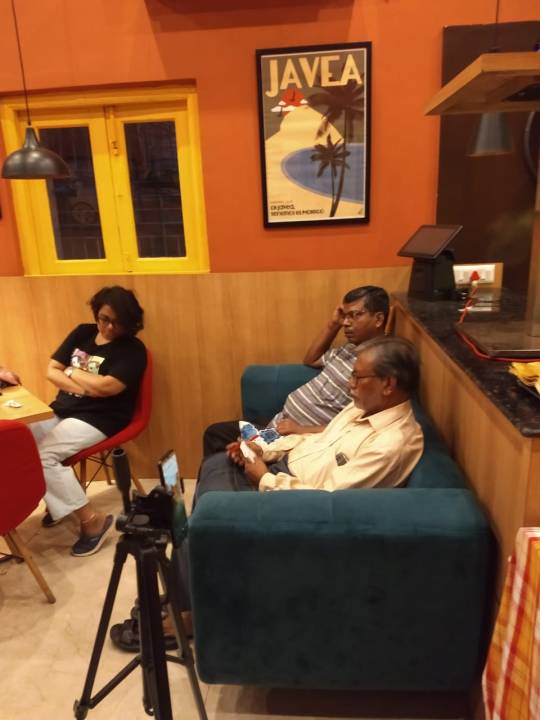
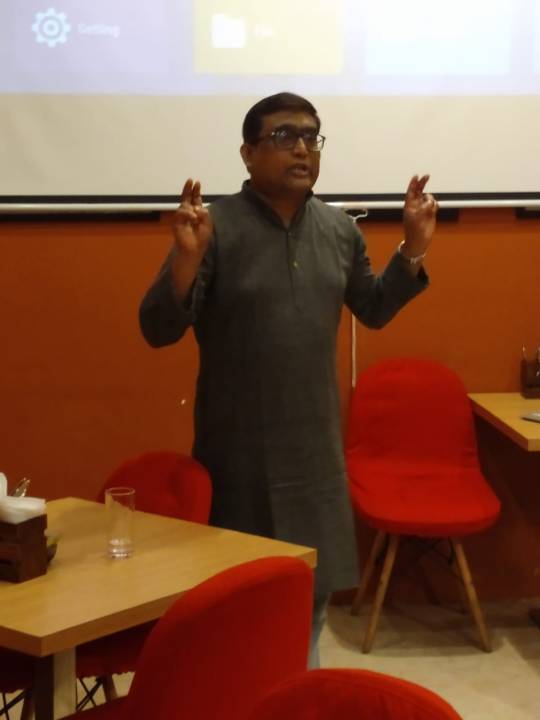
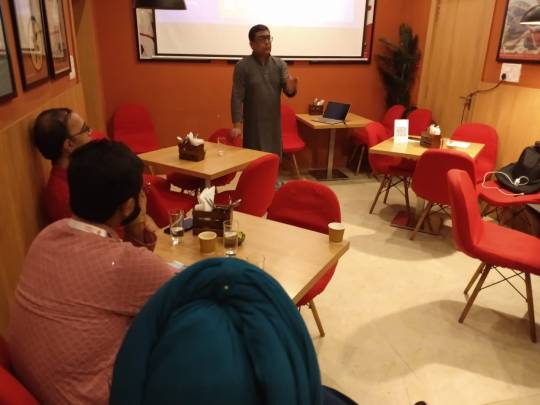
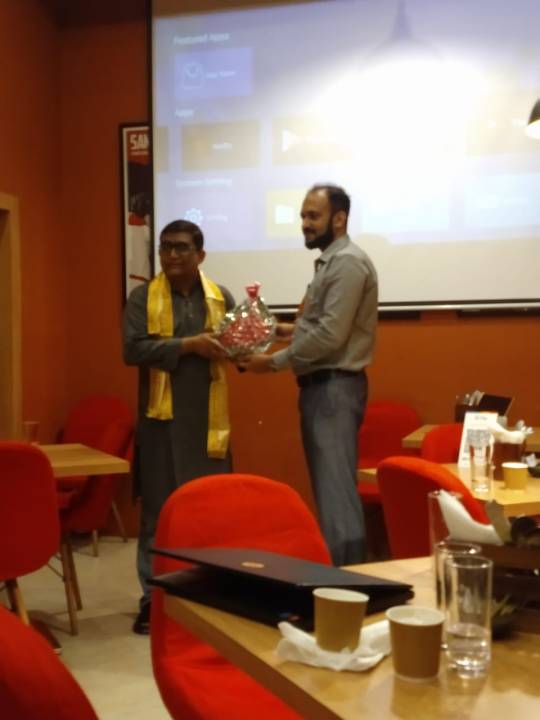


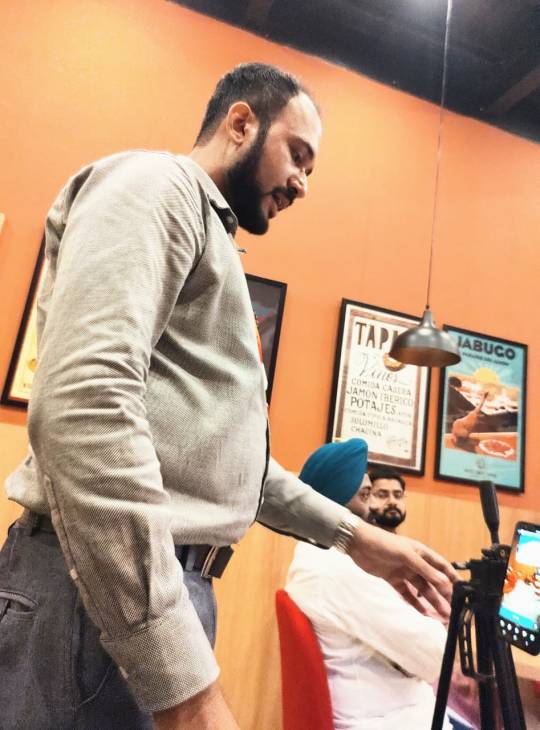
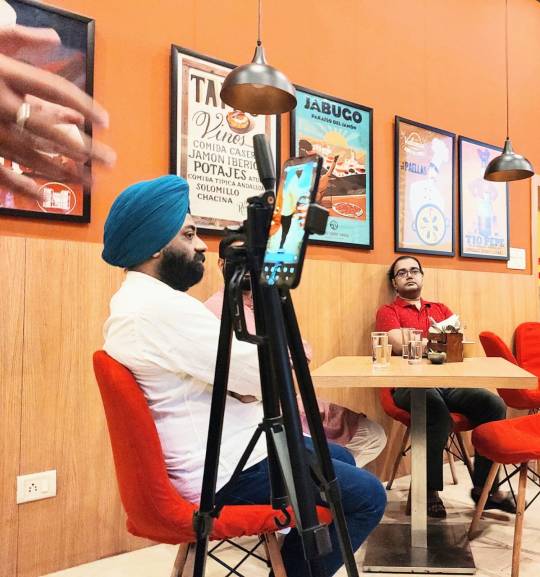

0 notes
Text
A Moment of Reflection: Thursday Evening with Photographer Satyaki Ghosh at his Studio
A Moment of Reflection : Thursday Evening with Photographer Satyaki Ghosh at his Studio It’s a blissful evening after meeting famous photographer Satyaki Ghosh (Satyaki da ) there’s so much to learn about photography, the analog ones and how he prepared himself working with Satyajit Ray, how he was mentored by Soumendu Roy, famous cinematographer who worked with Ray, sadly, he passed away 2 days…
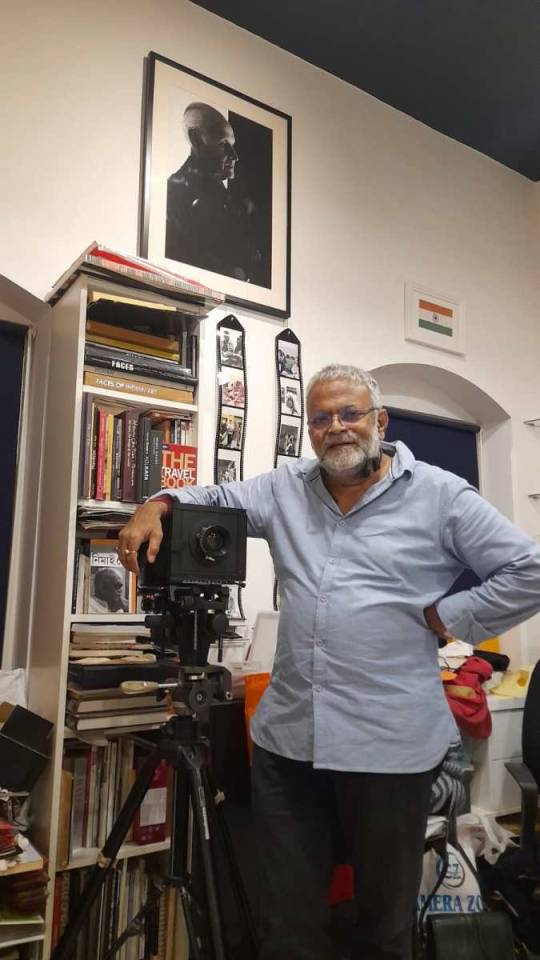
View On WordPress
0 notes
Photo

The Coward (1965, India)
With the Apu trilogy (1955-1959), Satyajit Ray became a darling of cinema academics and critics with his portrayal of one young man’s coming-of-age. By the mid-1960s after Charulata (1964), international attention to Ray’s films waned. Not that his movies declined in quality, but Ray appeared to be moving away from characters, settings, and narratives that might be considered “exotic” by Westerners. The situations, as in any film by Satyajit Ray, remain timeless. The Coward – also known by its original Bengali title, Kapurush – features a suffering artist character often found in 1950s and ‘60s Ray films. But in an interesting development, the artist’s creative soul is not what propels The Coward – instead, it is a litany of decisions rooted in the past, the temptations of the present.
Amitabha Roy’s (Soumitra Chatterjee) car has broken down somewhere in the Indian countryside, in or around Darjeeling. Amitabha, a screenwriter has been traveling across the country to gather material for a developing screenplay. Also at the mechanic’s garage is a tea plantation owner, Bimal Gupta (Haradhan Bandopadhyay), who offers a room to Amitabha for a night. The two men arrive at the estate, where Bimal introduces his wife, Karuna (Madhabi Mukherjee), to his visitor. Amitabha is stunned into silence – the woman only a few feet away from him is his ex-girlfriend. Introductions are warranted, pleasantries are exchanged, a meal is offered. During this time, Amitabha and Karuna’s respective body language suppose they are in an old lover’s daze – he has never resolved his feelings for Karuna; Karuna’s feelings are best not spoiled – yet they never tip Bimal off to their prior history. She was willing to disrespect her parents’ wishes to be with him; familial pressure and fear of commitment resulted in the breakup. When together, Bimal and Karuna seem bored, as if having little new or anything of interest to say to each other.
As usual, Ray is also the film’s writer, adapting The Coward from author Premendra Mitra’s story Janaiko Kapuruser Kahini. “The coward” of this film is Amitabha; the act of cowardice informing the film’s title is Amitabha’s inability to surrender to his heart’s desire when he and Karuna were lovers, rather than run from the familial, material, and social consequences that might have occurred by marrying her – so the conventional thinking goes. That act of cowardice – some readers might think the film’s title and that designation to be harsh on Amitabha, but opinions have varied wildly – underlines all of the conflict appearing here. Perhaps it is a character trait in Amitabha’s behavior over the time they have been together; there simply is not enough information or a conclusive flashback to confirm all of this speculation.
Will Amitabha and Karuna rekindle their feelings for each other after a few or several years? When he has the chance to speak to her individually, is Amitabha being inappropriate and is she even caring to listen to him? Is Bimal – written by Ray as bored, boring, and fond of alcohol – going to eavesdrop or arrive at the worst possible time, setting up the most awkward situation imaginable?
The answers to all of these questions might surprise first-time viewers, as Karuna displays a peculiar aloofness the moment she is alone with Amitabha for the first time. Those who have not finished the film should skip this paragraph, the quote in between, and the paragraph after that. More questions – this time asked by Amitabha himself – perhaps inspire that distance. He asks if she is happy, if she still has feelings for him. Coming from Amitabha, these inquiry reveals his insecurity and willingness to start again. Karuna does respond about whether or not she is happy many hours after that first encounter – in broad daylight, with Amitabha listening on the opposite side of a dirt road where a convoy of trucks is about to pass. She warns him about judging a person after only knowing them for less than a day. Absolutely. She claims to have changed over time. No complaints there.
Perhaps I didn’t want to be happy.
What? Is Karuna deflecting Amitabha’s question to the cacophony of the incoming trucks? Or is she referencing Amitabha’s conception of happiness between the two of them, having long rejected his definition, and has pursued a “happiness” that is hers and no one else’s? Of all of her responses, this is the one that has been bedeviling me since completing The Coward (consider: Karuna’s stated dependence on sleeping pills and her reason for her presence in the film’s closing seconds). Either way – or if I have missed the point of that moment completely – Karuna has pursued happiness for herself and not to be confined by her family or Amitabha. Though her reasons are written too abstrusely for my tastes (or maybe this is because my experience with love is not sufficient to understand this film), this is a progressive female character for cinema – something transcending when this film was released and where it comes from.
With all this talk of cowardice, it might be enlightening to read Ray’s own words about The Coward. The film, he writes, glimpses into, “a certain type of cowardice and a certain selfishness, which seem to be concomitants of modern middle-class sophistication. The stress of modern living, and the uncertainty of getting a foothold and retaining it, are important causes of these complexes.“ Amitabha, a screenwriter, probably lives on a deadline-heavy schedule – forcing him to interpret large amounts of information and human interaction and translating those experiences on paper. Successes are temporary in show business, with another deadline and more bills to pay always on the horizon. It makes me wonder how Ray felt about the character of Amitabha – did he identify with him or pity him? The Coward, to me, does not feel like a condemnation but I’m not discounting the fact that someone could articulate a compelling case for that interpretation.
Regarding Karuna, she is the final character in an unofficial Satyajit Ray trilogy featuring women staking their own claims of self-assertion despite the disapproval of traditional families and other men. That trilogy includes: The Big City (1963), Charulata (1964), and The Coward (1965). Madhabi Mukherjee is the actress playing all of the female leads in that unofficial trilogy. More emotionally distant than the eponymous Charulata (as of the writing of this piece, I have not seen The Big City), Mukherjee’s Karuna is more understated than that previous role but – for reasons having to do with the maddeningly loose ends that Ray leaves this film with – her subtle expressions sometimes seem to be contradicting the tone of voice she or someone else is using. Also starring opposite her from Charulata is co-star Soumitra Chatterjee who – like Mukherjee – can modulate the film’s tone with the slightest change in facial language and bodily posture. This film does not contain his best performance either. These are two damned talented actors, but outside of the flashback scenes, I did not feel for either until the closing minutes of the film’s brief seventy-four-minute runtime.
Cinematographer Soumendu Roy (an assistant cameraperson to cinematographer Subrata Mitra on 1955′s Pather Panchali; Roy became Satyajit Ray’s go-to cinematographer after Mitra developed eye problems in the early-mid 1960s) has a fascinating opening tracking shot, but little else of interest afterwards outside of the scenes where Amitabha, Karuna, and Bimal are taking a break from driving a car into the countryside. The Coward, from a compositional standpoint, is more pedestrian in its imagery than most Ray works.
Outside of its debut at the 1965 Venice International Film Festival (nominated for the Golden Lion), The Coward never registered anywhere else. It does not appear to have been given a North American theatrical release (distribution rights appear to be with Janus Films/the Criterion Collection, but the film has never been released on home media in the region); two European theatrical releases are listed on IMDb (France in 1994, Portugal in 2014). In India, The Coward represented the first half of a double bill with Ray’s comedy The Holy Man (1965). Legal prints – let alone illegal versions with subtitles – might be difficult to come by (The Coward made its North American television premiere on Turner Classic Movies in the early hours of September 11, 2017).
As part of its initiative to help restore Satyajit Ray films for future generations, the Academy of Motion Picture Arts and Sciences (AMPAS) and the University of California, Santa Cruz (UCSC) have collaborated to preserve films like The Coward – itself restored in 2005. Ray’s remaining unrestored films are housed at UCSC and will they will be re-presented to cinephiles when those prints are ready. I myself am just getting started on Ray’s filmography, having also seen his Apu trilogy, The Music Room (1958), Charulata, and Nayak (1966). If The Coward is any indication, the wisdom and humanity found in Ray’s direction and writing matters not on the setting or the specificity of his characters’ lives before we are introduced to them. Instead, it is his willingness to explore human emptiness and an individual’s desire to evaluate and rectify the past.
My rating: 7/10
^ Based on my personal imdb rating. My interpretation of that ratings system can be found here.
#The Coward#Kapurush#Satyajit Ray#Soumitra Chatterjee#Madhabi Mukherjee#Haradhan Bandopadhyay#Premendra Mitra#Soumendu Roy#TCM#My Movie Odyssey
3 notes
·
View notes
Text
The Coward (1965)
SATYAJIT RAY
Bil’s rating (out of 5): BBBB.5.
Original Title: Kapurush
India, 1965. R.D. Banshal & Co.. Screenplay by Satyajit Ray, based on the story Janaiko Kapurusher Kahini. Cinematography by Soumendu Roy. Produced by R.D. Bansal. Music by Satyajit Ray. Production Design by Bansi Chandragupta. Film Editing by Dulal Dutta.
[youtube=https://www.youtube.com/watch?v=W6cj6229M4M&w=805&h…
View On WordPress
#Bansi Chandragupta#Dulal Dutta#Haradhan Bannerjee#India#Janaiko Kapurusher Kahini#Madhabi Mukherjee#R.D. Bansal#R.D.Banshal & Co.#Satyajit Ray#Soumendu Roy#Soumitra Chatterjee
0 notes
Photo
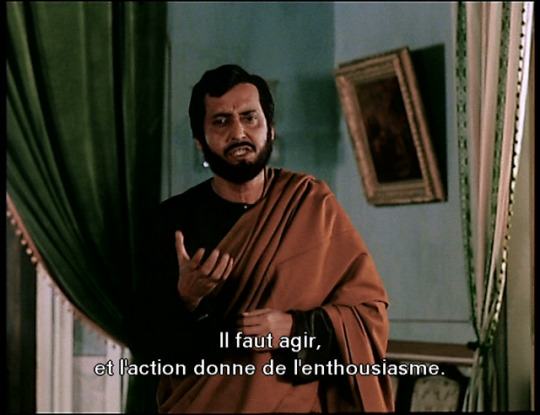
ঘরে বাইরে, Satyajit Ray (1984)
Cinematography: Soumendu Roy
| India
4 notes
·
View notes
Video
youtube
Trailer: Shatranj Ke Khilari (The Chess Players) (1977)
Language: Hindi/Urdu/English
Subtitles: English
Director: Satyajit Ray
Producer: Suresh Jindal
Writer: Satyajit Ray, Shama Zaidi, Javed Siddiqi
Screenplay: Satyajit Ray
Cast: Sanjeev Kumar, Saeed Jaffrey, Shabana Azmi, Richard Attenborough, Farida Jalal, Amjad Khan, Victor Banerjee, Farooq Shaikh
Narration: Amitabh Bachchan
Music: Satyajit Ray
Cinematography: Soumendu Roy
Editor: Dulal Dutta
Distributor: Shemaroo
Description: Shatranj Ke Khilari is a 1977 Indian film written and directed by Satyajit Ray, based on Munshi Premchand's short story of the same name. Amjad Khan plays the role of Wajid Ali Shah, King of Awadh, and Richard Attenborough plays the role of General James Outram. The film also features the actors Sanjeev Kumar, Saeed Jaffrey, Shabana Azmi, David Abraham, and Tom Alter, as well as Amitabh Bachchan as the narrator. The film is set in 1856 on the eve of the Indian rebellion of 1857. The British are about to annex the Indian State of Awadh. The daily life of two wealthy men who are devoted to chess is presented against the background of scheming officials of the British East India Company, the history of its relations with the Indian ruler of Awadh, and the ruler's devotion both to his religious practice and the pursuit of pleasure.
2 notes
·
View notes
Photo
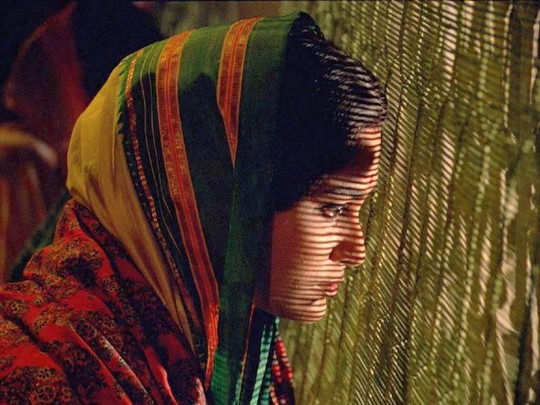
Swatilekha Sengupta in The Home and the World (Satyajit Ray, 1984)
Cast: Soumitra Chatterjee, Victor Banerjee, Swatilekha Sengupta, Gopa Aich, Jennifer, Kendal, Manoj Mitra, Bimala Chatterjee, Indrapramit Roy. Screenplay: Satyajit Ray, based on a novel by Rabindranath Tagore. Cinematography: Sumendru Roy. Production design: Athoke Bose. Film editing: Dulal Dutta. Music: Satyajit Ray.
Revolutions are mounted in the name of human betterment, but humanists -- those who try to act upon their belief in the potential of all human beings -- make lousy revolutionaries. That seems to be the message of Satyajit Ray's The Home and the World, an adaptation of a novel by Rabindranath Tagore that Ray had wanted to film almost his entire career. He finally overcame the obstacles to its filming in the last years of his life, but paid the price of two severe heart attacks while making it. He supervised its completion by his son, Sandip Ray. While it's rich in images and performances, the film does seem a little slow in telling its complex story. Satyajit Ray, who also wrote the screenplay, resorts occasionally to voiceovers, often a sign of uncertainty on the part of a filmmaker about whether his story is getting clearly told. The film begins with Bimala (Swatilekha Sengupta), the wife of the wealthy Nikhilesh Choudhury (Victor Banerjee), being tutored in English style and manners by Miss Gilby (Jennifer Kendal). Specifically, Bimala is learning an English parlor song, "Long, Long Ago." But Nikhil, who is a nascent liberal reformer, wonders why Bimala should be learning a foreign song. He becomes determined to free her from the strictures imposed on Indian women: Among other things, she's confined to only part of their large house -- women are forbidden to enter the part where he entertains guests. So when his friend Sandip (Soumitra Chatterjee), a spokesman for Swadeshi, the revolutionary movement protesting British rule, comes to stay in that part of the house, Nikhil takes Bimala down the corridor that connects the two parts -- shocking Bimala's widowed sister-in-law (Gopa Aich), who lives a life of idle complaining about her lot -- and introduces her to Sandip. It's an electric moment. Suddenly, not only her home but also the world of politics is opened to Bimala. Eventually, Sandip and Nikhil will have to clash, not just over Bimala but also over Swadeshi's program to have the country boycott foreign goods and learn to rely only on India-produced merchandise. The year is 1907, when the British mandated a partition of Bengal into separate Hindu and Muslim regions, and the religious separation only adds fuel to the economic conflict. Nikhil is in favor of Swadeshi up to a point, but as a man who owns a largely Muslim-run market, he also knows that eliminating foreign goods will hurt the poor, who can't afford the higher-priced Indian items. Bimala becomes the film's focal point for the division between Sandip's fervor and Nikhil's idealism, with tragic results. The three central performances are superb, and the color cinematography of Soumendu Roy and production design by Ashoke Bose are handsome, but the merger of history and romantic fiction is uneasy, with occasionally sketchy results on both counts.
3 notes
·
View notes
Photo
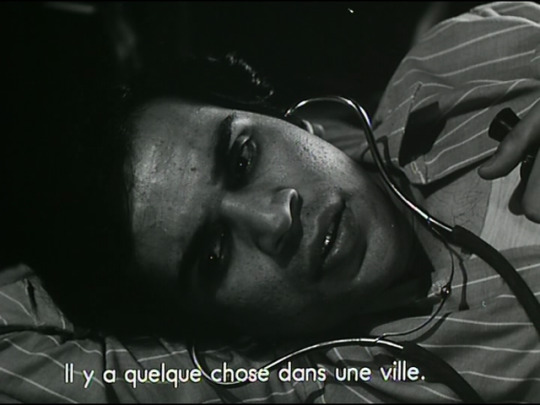

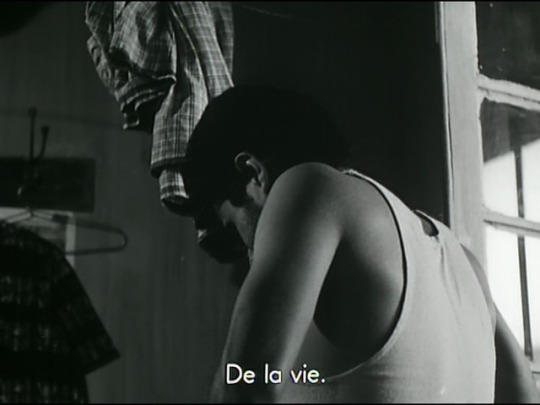
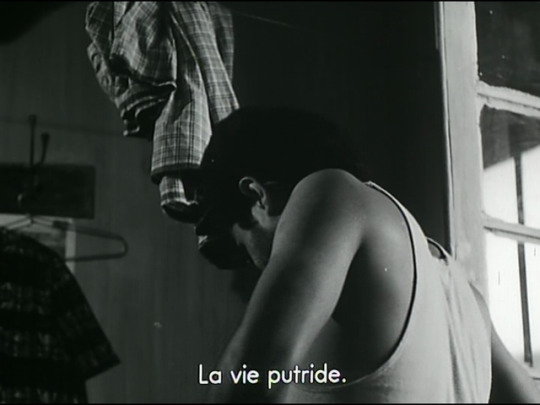
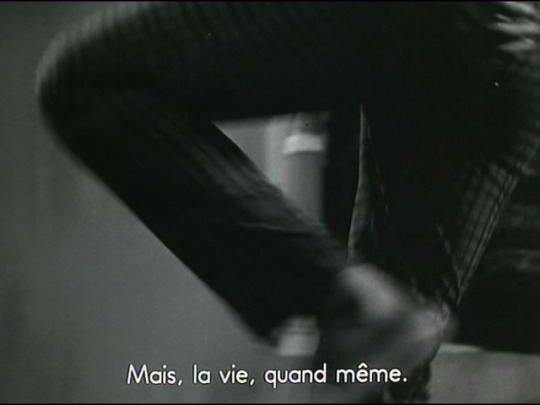
প্রতিদ্বন্দ্বী, Satyajit Ray (1970)
Cinematography: Purnendu Bose, Soumendu Roy
| India
#Pratidwandi#Pratidandi#The Adversary#প্রতিদ্বন্দ্বী#L'Adversaire#Satyajit Ray#Dhritiman Chatterjee#B & W#Life#Windows#1970
2 notes
·
View notes
Photo
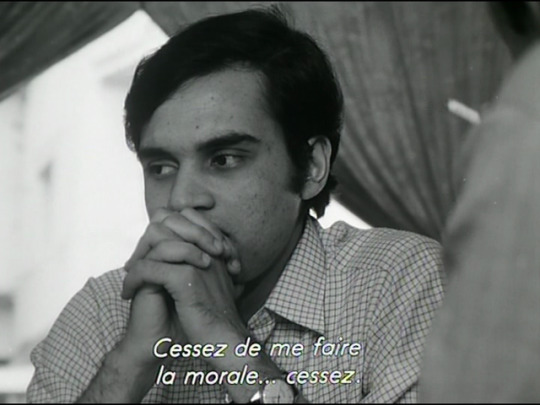
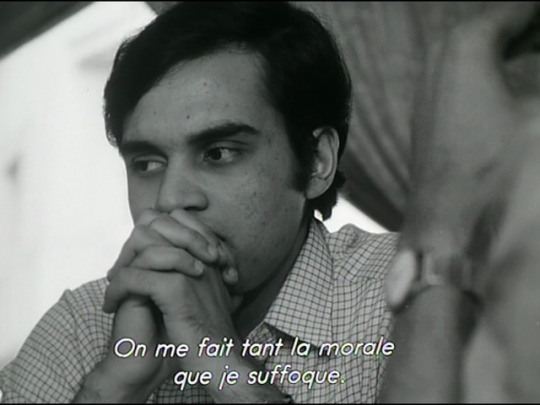


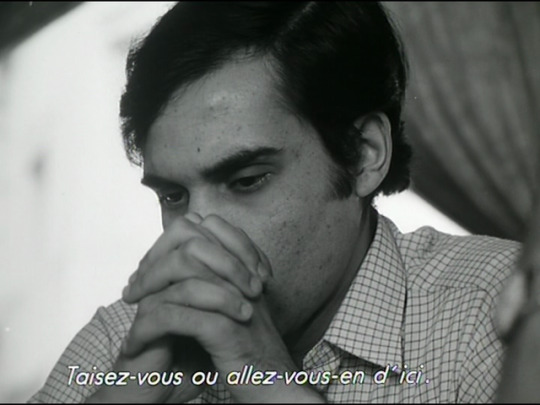
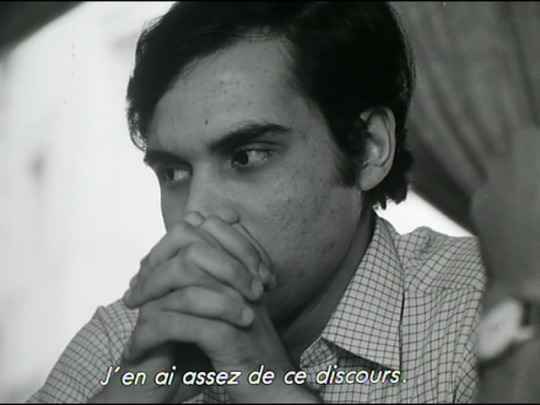
প্রতিদ্বন্দ্বী, Satyajit Ray (1970)
Cinematography: Purnendu Bose, Soumendu Roy
| India
#Pratidwandi#Pratidandi#The Adversary#প্রতিদ্বন্দ্বী#L'Adversaire#Satyajit Ray#Dhritiman Chatterjee#B & W#Looks#Hands#1970
0 notes